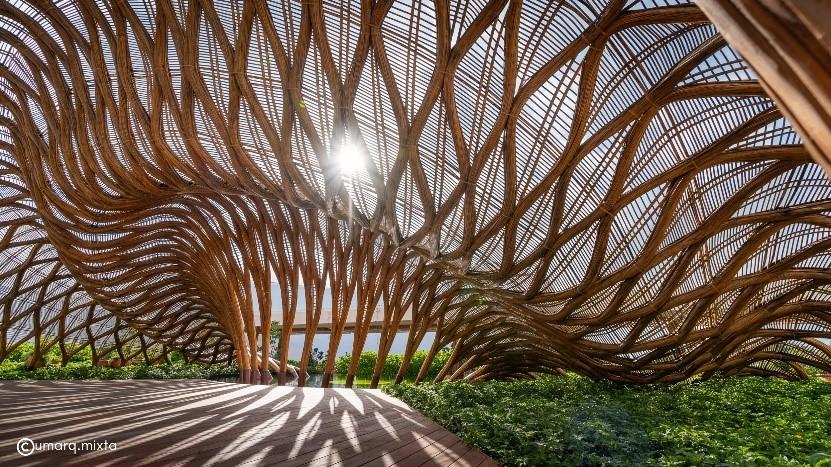BAMBOO - AN IMPORTANT ALTERNATIVE MATERIAL OF THE 21ST CENTURY
In the context of resource crises and global environmental challenges, finding and developing alternative material sources is an urgent task. Among these, bamboo emerges as an important alternative material source, offering sustainable and efficient solutions for various industries and fields.
Sustainability and Regeneration Capability
Bamboo is one of the fastest-growing plants on the planet. Some bamboo species can grow up to 91 cm per day, and most bamboo species can reach mature height in just a few months. This short growth cycle allows bamboo to be harvested more frequently than traditional wood, which takes decades to centuries to mature. This reduces pressure on natural forests and helps protect ecosystems.
Superior Characteristics of Bamboo
Bamboo has superior physical and chemical properties that make it an ideal alternative material source for many traditional resources:
High Durability: Bamboo has high mechanical strength, suitable for use in construction and furniture production.
Good Elasticity: Bamboo can resist bending and deformation, making it suitable for applications requiring flexibility.
Stable Performance: Bamboo can withstand harsh environmental conditions, extending the lifespan of bamboo products.

Diverse Applications of Bamboo
Bamboo can be used in various fields, from construction, furniture, to food and handicrafts:
Construction: Bamboo is used to make columns, beams, and house frame structures, thanks to its durability and flexibility.
Furniture: Bamboo is an ideal material for producing tables, chairs, beds, cabinets, and various other furniture items, offering sustainability and aesthetics.
Food: Bamboo shoots are a nutritious food source that can be processed into many delicious and nutritious dishes.
Handicrafts: Bamboo is used to make baskets, trays, and beautiful handicraft products.


Replacing Traditional Materials
Bamboo is gradually replacing traditional materials in many industries, helping address resource scarcity and environmental pollution:
Wood: Bamboo is an effective substitute for wood in construction and furniture production, reducing pressure on natural forests.
Plastic: Bamboo products can replace plastic, helping reduce plastic pollution and protect the environment.
Paper: Bamboo can be processed into paper and pulp, reducing dependence on wood from virgin forests.
Contribution to Economy and Society
Growing and processing bamboo creates many jobs for local people, especially in rural areas. Bamboo products are increasingly popular in international markets, creating export opportunities and boosting the local economy. This not only improves people's livelihoods but also contributes to sustainable economic development.
Environmental Protection
Bamboo can regenerate naturally from the roots after harvesting, without the need for replanting, helping protect the soil and prevent erosion. Bamboo also helps improve air quality by absorbing CO2 and providing oxygen, contributing to reducing the greenhouse effect and climate change.
Conclusion
In the 21st century, bamboo is not only a rich natural resource but also an important alternative material source, offering sustainable solutions for many resource and environmental challenges. With its rapid regeneration capability, versatility, and contribution to economic development, bamboo will undoubtedly continue to play a crucial role in building a sustainable future. Effective utilization and exploitation of this resource will bring great benefits to both people and the planet.
